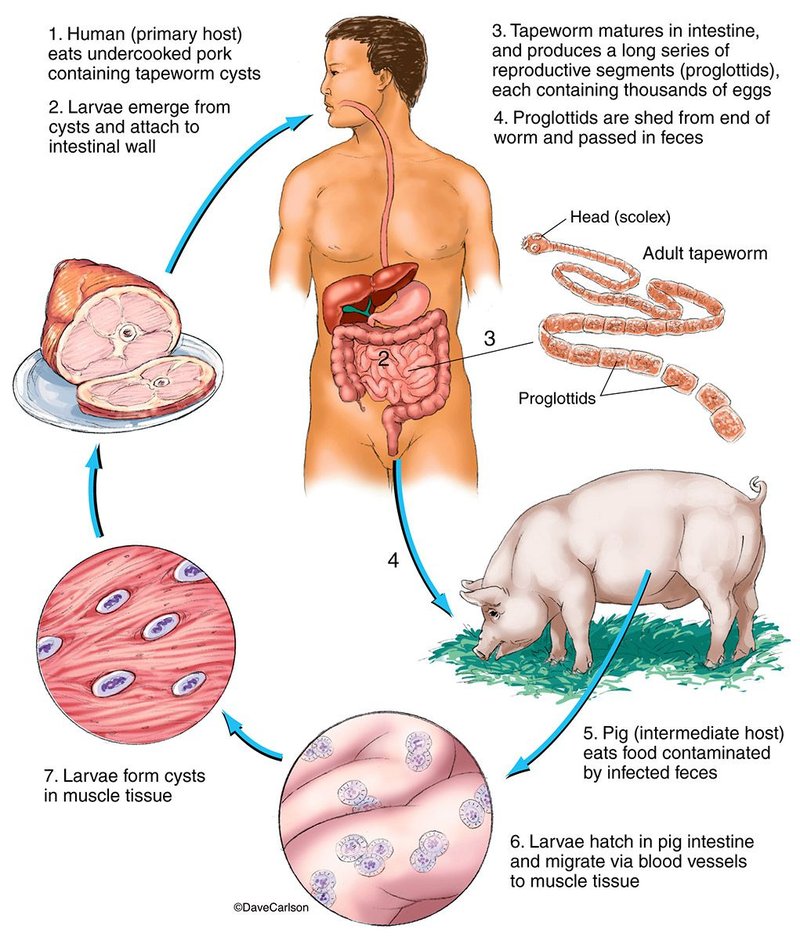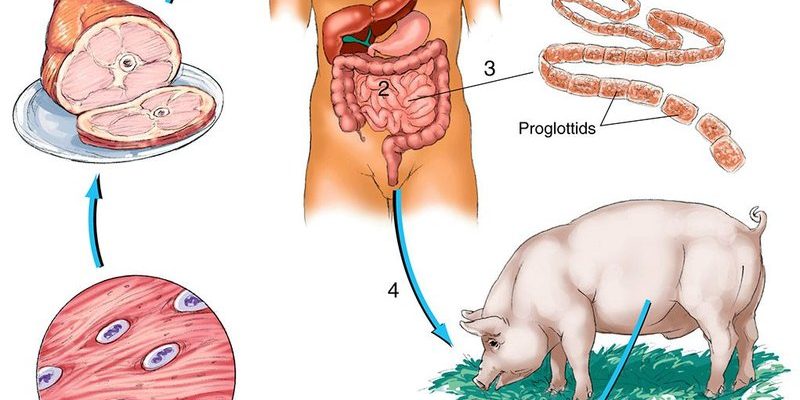
Tapeworms are found in the intestines of various animals, including humans. These parasites latch onto the intestinal wall and essentially make themselves at home. They have no mouth or digestive system as we know it, which just adds to the mystery of their survival. So, let’s dig into how they manage to feast on their host’s nutrients and what makes their feeding mechanism so unique.
Understanding Tapeworm Anatomy
Before diving into their feeding mechanism, it’s essential to know a bit about tapeworm anatomy. Tapeworms have several segments called proglottids, which each contain reproductive organs and a set of muscles. The head, or scolex, is equipped with hooks or suckers that allow the tapeworm to attach firmly to the intestinal wall.
This unique design helps them stay securely in place as they absorb nutrients. You might imagine it like a really strong Velcro that doesn’t let go. The lengthy body of the tapeworm can reach up to 30 feet or more, giving them plenty of surface area to absorb nutrients. Their body is covered in tiny hair-like structures called microvilli, which increase their ability to take in nutrients.
How Tapeworms Absorb Nutrients
Here’s the thing: tapeworms don’t have a mouth or stomach. Instead, they rely on osmotic uptake to absorb nutrients directly through their skin. This is a passive process, meaning they don’t actively “eat” like we do. Instead, they soak up whatever’s available in the host’s intestines.
As the host digests food, nutrients are broken down into smaller molecules. These nutrients, such as sugars and amino acids, then diffuse through the tapeworm’s skin and into its body. It’s a bit like a sponge soaking up water, except the tapeworm is absorbing all the good stuff directly from the food that’s being digested by the host.
The Role of the Host’s Digestive System
The host’s digestive system plays a crucial role in how tapeworms feed. When the host eats, its digestive enzymes break down food into smaller pieces. The nutrients released during this process are what the tapeworm relies on for survival.
Tapeworms can actually thrive in environments rich in nutrients. For instance, if the host has a diet high in carbohydrates, the tapeworm will benefit from the increased sugar levels in the intestines. This clever relationship can be detrimental to the host, leading to nutritional deficiencies over time, especially if the tapeworm population grows large.
What’s more, if the host’s digestive system is functioning well, it helps the tapeworm to access a steady stream of nutrients. However, if the host has digestive issues, it can affect the tapeworm’s ability to feed. It’s a rather one-sided relationship where the tapeworm gets all the perks while the host suffers from a lack of nutrients.
Living Conditions of Tapeworms
Tapeworms prefer warm-blooded hosts to survive—this includes humans, dogs, cats, and livestock. The intestines of these creatures provide a rich environment for tapeworms to feed on. Additionally, the length and health of the tapeworm depend on the host’s overall health and diet.
These worms can adapt to different digestive environments. For instance, some species of tapeworms can survive in a host’s digestive system that’s been altered by medication or illness. This survival strategy allows them to continue feeding even when conditions aren’t ideal. It’s a remarkable feat of adaptability that showcases how these parasites thrive in various environments.
Impact of Tapeworm Feeding on Hosts
The feeding mechanism of tapeworms can have serious consequences for their hosts. Since they absorb nutrients directly, hosts can suffer from malnutrition, even if they are eating enough food. Common symptoms of a tapeworm infection include weight loss, fatigue, and even digestive issues like nausea or diarrhea.
In severe cases, tapeworms might cause blockages in the intestines, leading to more serious health issues. It’s a harsh reality where the tapeworm thrives but at the expense of the host’s health. If you suspect a tapeworm infection, it’s vital to seek medical attention to get the appropriate treatment.
How to Treat Tapeworm Infections
If you or your pet have been diagnosed with a tapeworm infection, don’t panic. Treatment usually involves medication that targets the tapeworms specifically. Anti-parasitic drugs can effectively kill the tapeworm and help expel it from the body.
Here’s a simple overview of the treatment process:
- Diagnosis: A healthcare provider will usually test for tapeworm segments in stool samples.
- Medication: Common medications prescribed include praziquantel or niclosamide.
- Follow-up: It’s crucial to follow up with your healthcare provider to ensure the infection is cleared.
In addition to medication, the host should also focus on maintaining a healthy diet to replenish any lost nutrients. This can help restore well-being and prevent future infections.
Preventing Tapeworm Infections
Prevention is always better than cure, especially with parasites like tapeworms. Here are some practical tips to keep in mind:
- Proper hygiene: Wash your hands regularly, especially after handling pets.
- Cook meat thoroughly: Ensure that you cook meat to the recommended temperatures to kill any potential tapeworm eggs.
- Regular check-ups: Have your pets regularly checked for parasites and treated as necessary.
By taking these simple precautions, you can significantly reduce the risk of tapeworm infections for yourself and your pets.
The Bottom Line: Why Understanding Tapeworm Feeding Matters
Understanding the feeding mechanism of tapeworms not only satisfies our curiosity but also highlights the delicate balance of life within our ecosystems. These parasites serve as a reminder of how interconnected living organisms are, and that even the tiniest creatures can have a massive impact on their hosts.
So, the next time you hear about a tapeworm, think about its fascinating feeding habits and how its survival relies on its host. It’s a world filled with complex relationships, and knowing how tapeworms function can help us better understand the importance of maintaining good health and hygiene.

